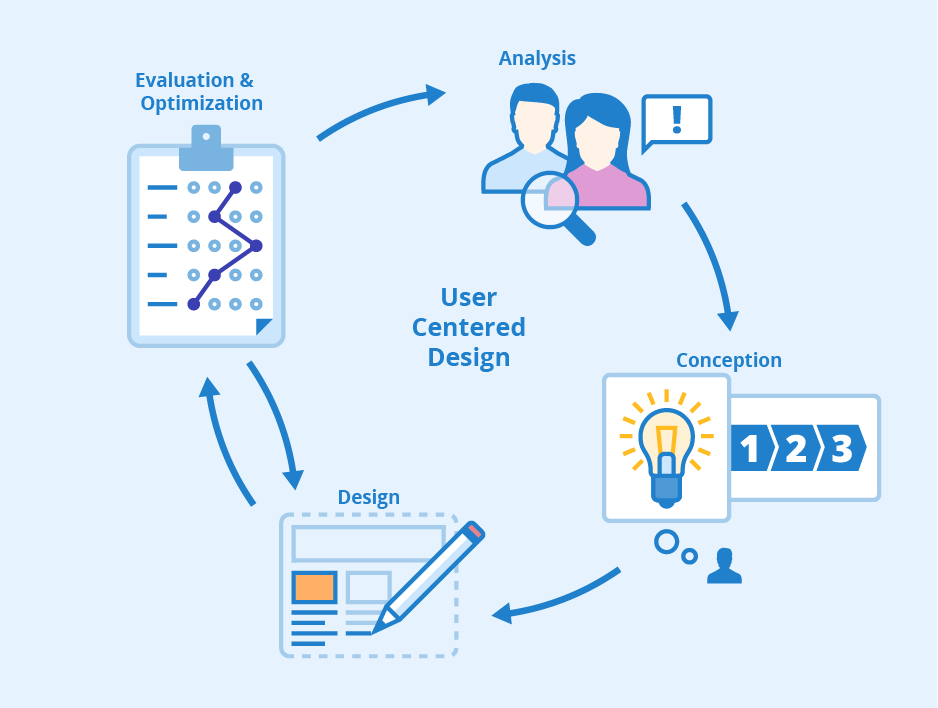What Are The Steps of The Development Process For a Software Project?
Saurabh Kumar - July 25, 2024, 12:00 PM

Software development is a complex, collaborative process involving teams, systems, and methods, wherein task-specific or multifunction software (instruction/programs for a computer) is created by following a structured process involving design, testing, deployment, and maintenance.
This software can be for core processes like operating computers (O.S), hardware or disk management, etc., called system software or programming (compilers, linkers, debuggers), application (for specific tasks like data management, productivity ), and embedded software (these interconnect machines and devices through IoT). The steps of the Development Process For a Software Project that occurs concurrently or overlaps with one another are listed here:
Importance of Following a Structured Software Development Process
Software plays a pivotal role in making a product or service stand out in the competitive market, and companies fail to prioritize software development quality, leading to being left behind. Failing to follow structured steps and neglecting industry best practices leads to poor code quality and compromises security, readability, and ease of handling.
Adhering to definite steps in the software development life cycle (SDLC). It has benefitted all stakeholders and established benchmarks of excellence in software development. SLDC is a framework involving steps for systematically managing the entire software journey from design to deployment to delivering quality end-products. Following strategic steps helps in the full-cycle software development process, expedites time-to-market, and helps deliver value at speed. Here is a detailed view of the steps involved in developing software and their prominence in the software development lifecycle.
Also Read: - Is Software Development Hard
Steps in The Development Process For a Software Project
Developing software typically involves the following steps:
1) Requirement Analysis and Discovery
Before starting software development, the primary step involves getting a clear picture of what the software is expected to do through discovery calls, enquirer information, detailed analysis, and the exact use case. This involves understanding multiple fronts for the software project, such as the existing systems being used, document analysis, understanding the requirements of the end, and comprehending the analytics of existing systems to understand the target audience. These inputs provide a solid base for planning the software project.
2) Software Project Planning
The first step in software development lays the groundwork for planning. It helps establish a proof of concept, giving on project cost, resource allocation, and methodology best suited for project success. The next steps involve the development approach, formula formulating assignment of responsibilities to the team, and defining the development team like project leader, scrum master, etc. de, pending on the methodology used. This primary step helps track progress and assign responsibilities to mitigate risks through a structured approach.
3) Methodology Selection
The second and third steps in the software development process often happen concurrently. The third step in software development involves the selection of a methodology to get a roadmap for the project. This step is where the actual software development process takes its final shape.
The most commonly used software process methodologies are listed below:
-
Agile Methodology: The agile software development steps include incremental and iterative processes based on collaboration and customer satisfaction.
-
Waterfall Model: Liner software development process based on strict sequencing
-
Scrum Framework: A software development methodology that aligns teams to accomplish a common goal
-
Lean Methodology: Optimize efficiency, development time, and resources
-
DevOps Methodology: Software development methodology where development and operations teams work together to deliver high-quality software, enabling faster time-to-market
-
Rapid Application Development (RAD) Methodology: High-quality, low-cost software development for small, well-defined, time-sensitive software projects is chosen based on which best suits the project requirements.
4) System Designing Phase
The System Design phase involves many intricate steps for successful software development. It consists of making a detailed plan or blueprint for the software project and deciding on the architecture, components, modules, and interfaces. The system design phase in software development is based on the expected functionality called functional requirements; system performance/quality called non-functional requirements; technical requirements like the tech stack to be used; and business, user, budgetary, regulatory, and compliance requirements.
-
Software Architecture Design: It is a technical framework or high-level structure of the software system and involves defining the programming language, tools, components, interactions, technology stack, etc., and depends on the methodology being used.
-
Data Design: The data design part involves the organization and structuring of data using key components like data models, schema, and storage, considering scalability and performance.
-
Security Design: Security is a critical requirement, and security design involves adding robust authentication, authorization, and encryption for risk management, security, and compliance.
-
Interface Design (UI/UX): This part focuses on the “visible” part of the software, i.e., visual layout/appeal, user experience, and usability for intuitive, user-friendly, and consistent interactions and navigation.
5) Building a Model/Prototype:
After the above exercise, a prototype or model of the software is created using SysML (Systems Modeling Language) or UML (Unified Modeling Language) to validate design concepts and to test and refine design ideas early. Creating prototypes and simulating them gives a glimpse into what the software will look like, how it will work, and how it will perform.
Also Check: - MERN Stack Development
6) Coding or Development Phase and Integration
According to McKinsey, top tech companies aim for developers to spend up to 70 percent of their time doing inner-loop activities (coding, building, and unit testing). Programming or Coding part of the software development phase is the culmination of all the above steps and is a key step in the software development process for software projects. The team of software developers constructs/writes code in programming languages for frontend, backend, databases, etc., using industry best practices. The code modules are integrated into cohesive applications with libraries and databases.
6) Software Testing and Integration
Software testing ensures that the code meets the functional requirements, integrates well, and is adaptable. It involves:
-
System Testing: A thorough testing of the software as a whole.
-
Unit Testing: Here, individual modules/components of code are tested
-
Integration Testing: This part tests how well the code's different modules interact as a whole.
-
Functional Testing: Functional testing is performed to compare the specifications with the final software built and checks if the primary purpose for which the code was written is achieved.
-
Performance Testing: The overall performance of the code for scalability and different workloads is tested.
-
Acceptance Testing: The end-user tests the software and analyzes it on all fronts, i.e. experience, functionality, and quality.
7) Deployment and Implementation
This step is where the final software reaches the end user and gets installed in the work environment. In this step, the software product is finally ready to be installed on the user’s machine. There are various ways to deploy, like keeping the legacy system running while parallely deploying the new software and analyzing the latest software’s performance in the work environment, called blue/green deployment. Another slow incremental deployment strategy is canary deployment, where traffic to new software is slowly increased.
Also Check: - Best Python Development
8) Maintenance and Support
Maintenance and support are the final steps in a typical software development life cycle and involve post-deployment activities like fixing bugs, fixing security threats, updating software with new features, user support, and performance monitoring.
Improve software development processes by following these steps for a structured, quality-focussed software project. These steps in software development ensure a structured approach and align teams toward a common goal. Following these steps in software development combined with industry best practices ensures faster time-to-value and time-to-market. Marking tracking and benchmarking become much easier for all stakeholders by adhering to these steps in software development, ultimately leading g to better ROI.






